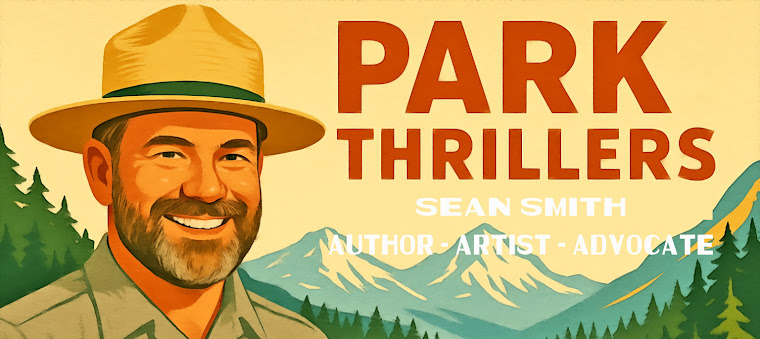 |
| Yellowstone's burnt forests |
1. Yellowstone's burnt forests. The fires that roared thru Yellowstone in 1988 left nearly a third of the park charred black. A forest of dead trees, like something out of Snow White's Haunted Forest nearly overnight replaced lush and mature Lodge Pole Pine forests. At night, one's imagination can play tricks and make one see monsters behind every twisted snag.
 |
| Snow White's Haunted Forest |
rest's regeneration process.
 |
| Glacier Park's Northern Lights ~ NPS |
But there is a more earthly explanation for the lights. They are actually high energy solar particles captured at the earth's pole's by its magnetic field. When these particles are captured by the magnetic field and when they collide with the earth's atmosphere produce bursts of spectacular light.
3. Hanford's B Reactor. During the height of World War II, the United States conducted a super secret program to build a weapon of unspeakable power. The United States believed it was in a race against Nazi Germany to developed the world's first atomic bomb. History tells us the United States was the first to unlock the cosmic power of the atom.
 |
| Hanford B Reactor ~ DOE |
The production of nuclear fuel produces millions of gallons of radioactive, mixed radioactive, and highly dangerous hazardous waste. Much of it was pour directly on the ground, millions of gallons more are now stored in leaking underground tanks.
On December 19, 2014, President Obama signed the Defense Authorization Bill creating the Manhattan Project National Historic Site. This park includes the Hanford B reactor, and sites at Los Alamos New Mexico, and Oak Ridge Tennessee. And tells the story of the Manhattan Project work that likely shortened the war, but also the incredible economic, social, environmental, and human cost. A cost we are still paying today.
I've sat at the reactor control panel. I've stood at the base of the Hanford B reactor pile. Staring up at the pile one is struck by the magnitude of the task the Manhattan scientists, soldiers, engineers, and politicians faced to beat the Nazis. One can only imagine the decisions, stress, conflicts, compromises, that were made. The ghosts of those decisions still permeate the site.
 |
| Fort Vancouver ~ NPS |
5. Pickett's March In July of 1863, the United State's was at the height of a bloody civil war. At its
 |
| Pickett's Charge ~ NPS |
Standing on both Seminary and Cemetery ridges, the starting locations of the Confederate and Union forces respectfully, one is struck by the gravity of the battle that took place on these grounds. One is left wondering where the courage comes from to step out onto a field where one is likely to be killed.
Like the Hanford B reactor and Fort Vancouver, Gettysburg has a surreal feel to it. A place haunted by the sacrifice and loss of life that took place on these grounds. And even though the battle was more than 150 years ago, the echoes of those lost lives can still be heard today.
That's it. These are my list of the National Park's spookiest places. What are your thoughts?
Sean Smith is a former Yellowstone Ranger, and an award winning conservationist, TEDx speaker, and author. He writes national park thrillers from his home in the shadow of Mount Rainier National Park. To learn more about his thrillers click here or follow him on twitter: @parkthrillers





